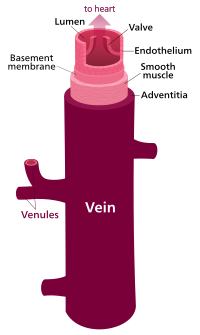
Photo from wikipedia
Since the inception of transcatheter aortic valve replacement (TAVR), there have been significant reductions in complications due to improvements of transcatheter heart valve (THV) designs and technologies. Given expanding TAVR… Click to show full abstract
Since the inception of transcatheter aortic valve replacement (TAVR), there have been significant reductions in complications due to improvements of transcatheter heart valve (THV) designs and technologies. Given expanding TAVR applications, reducing complications further and better understanding THV durability has become a focus within the structural heart space. Recently, dedicated cardiac computed tomographic angiography (CTA) performed at 1 month post-TAVR has identified subclinical leaflet thrombosis (SLT), with rates as high as 40%. From the SLT imaging hallmarks of hypoattenuated leaflet thickening (HALT) to hypoattenuation affecting motion (HAM), a postulated timeline of THV thrombosis advancing to clinical symptoms can be recognized. This review article focuses on leaflet thrombosis particularly following TAVR explaining the spectrum of this disease process, its diagnosis, current treatment options, and future directions in the field.
Journal Title: Journal of interventional cardiology
Year Published: 2018
Link to full text (if available)
Share on Social Media: Sign Up to like & get
recommendations!